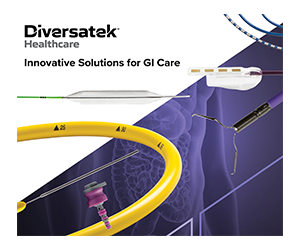Two recent studies find advances in radiation therapy are helping to prolong or improve the lives of people with anal cancer, including those whose cancer has advanced to stage IV. Both studies were published in the International Journal of Radiation Oncology * Biology * Physics (Red Journal), the flagship scientific journal of the American Society for Radiation Oncology (ASTRO).
One study, of patients with advanced-stage anal cancer whose disease has spread to the para-aortic lymph nodes, found that a combination of extended-field radiation therapy and chemotherapy could substantially improve overall survival and control the cancer without increasing serious side effects. A second study found that, for patients with locally advanced anal cancer, the use of intensity modulated radiation therapy (IMRT) instead of conventional radiation treatment improved tolerance of radiation treatments and reduced the need for ostomy (surgery to re-route how waste exits the body).
Anal canal cancer is relatively rare, with approximately 8,000 new cases diagnosed each year in the United States. Most anal canal cancers are squamous cell carcinomas (SCC) that have not yet spread to other parts of the body. Roughly 20 percent of anal SCC patients, however, are diagnosed with distant metastatic disease, also known as stage IV disease, each year.
Aggressive combination therapy prolongs survival for select patients with stage IV anal cancer
Patients with stage IV anal cancer typically have not been considered candidates for definitive treatment once their cancer had spread to other parts of their bodies. A new study shows that, if that cancer has spread only to the para-aortic lymph nodes, aggressive treatment in the form of extended-field radiation therapy could potentially improve their long-term outcomes.
“The label of ‘stage IV’ cancer is not one size fits all,” said lead researcher Emma B. Holliday, MD, an assistant professor in the department of radiation oncology at the University of Texas MD Anderson Cancer Center in Houston. “There are emerging data in several cancer types where aggressive treatment of metastatic disease can improve survival.”
“Although the involvement of the para-aortic nodes is considered metastatic disease for squamous cell carcinoma of the anal canal, we have long suspected that these patients do not have the poor prognosis that accompanies a stage IV diagnosis in other cancers,” she said. “The results from this study showed that aggressive combination treatment with definitive extended-field chemoradiation can lead to good outcomes.”
It is common for SCC to spread to the pelvic and inguinal lymph nodes before moving on to the para-aortic (PA) lymph nodes. Holliday noted that her results were similar to previous studies of patients with SCC of the cervix who had been classified as stage IV due to metastases to the para-aortic lymph nodes.
In this retrospective review, Holliday and her team assessed long-term outcomes for 30 patients who were treated with curative-intent, extended-field chemoradiation — combined chemotherapy and radiation therapy — between September 2002 and February 2016 at the University of Texas MD Anderson Cancer Center in Houston and the Mayo Clinic in Rochester, Minnesota.
Over the course of the study, external beam radiation therapy techniques evolved. Therefore, some patients were treated with 3D conformal techniques during the early phase of the study and a few were treated with intensity modulated proton therapy during the later phases. The vast majority of patients, however, were treated with IMRT. For chemotherapy regimens, patients received either six weekly cycles of cisplatin with 5-fluoruracil/capecitabine (5-FU), two cycles of mitomycin-C with 5-FU or daily capecitabine.
After 3.1 years of follow-up, 18 of 30 patients remained alive and 17 showed no evidence of anal cancer. The overall survival rate was 67 percent (95% CI 49-89), with a disease-free survival rate of 42 percent (95% CI 25-69). Cancer recurred in 15 of the patients (50 percent), predominantly as distant metastases.
No patients died from side effects related to the aggressive combination therapy. The treatments were well tolerated, although patients undergoing chemoradiation treatment for anal cancer often experience severe (grade 3-4) hematologic side effects, such as the loss of red and white blood cells, increased susceptibility to infection and loss of blood platelets; gastrointestinal side effects, such as nausea, vomiting, diarrhea and loss of appetite; and/or skin reactions. Six patients (20 percent) in this study experienced severe hematologic problems, nine (30 percent) experienced severe gastrointestinal side effects and eight (27 percent) experienced severe skin reactions.
“I think we see that patients with para-aortic node metastases are potentially curable because these lymph nodes are the next echelon up from what we consider to be the regional lymph nodes in the pelvis,” said Holliday. “Most importantly, if we can deliver a curative dose of radiation to all sites of disease, we have the potential to extend survival for these patients.”
IMRT increases ability to complete treatment cycles, decreases need for breaks and additional surgery
Another recent study from the Red Journal examined how improvements in radiation therapy technology have led to fewer side effects and treatment interruptions for patients with locally advanced anal cancer. This review of a large clinical database found that a technologically advanced type of radiation, IMRT, could reduce toxicities for anal canal cancer patients treated with radiation.
“Using data from the national Veterans Affairs system of hospitals, we studied radiation toxicities among veterans with anal cancer and compared IMRT versus older forms of radiation therapy,” said lead researcher Alex K. Bryant, MD, a resident physician affiliated with the department of radiation medicine and applied sciences at the University of California, San Diego, School of Medicine. “We found that IMRT produced substantial benefits, including decreasing the need for treatment breaks and increasing chemotherapy completion rates.”
IMRT is a specialized type of radiation treatment that manipulates photon or proton beams of radiation into the shape of the targeted tumors, in order to limit radiation exposure to the healthy tissue surrounding the tumors.
Bryant and his team identified 779 patients in a national Veterans Affairs database who had been diagnosed with locally advanced anal SCC between 2000 and 2015. The patients had been treated with conventional radiation therapy (n=403) or IMRT (n=376), both with concurrent chemotherapy. The adoption of IMRT increased substantially during the study period; no patients received IMRT prior to 2004, compared to 89 percent of patients treated from 2012 to 2015.
The researchers found that patients treated with IMRT were 42 percent less likely to require a break from radiation treatment of more than five days. IMRT patients also had a 40 percent lower risk of needing ostomy surgery related to cancer progressing or recurring.
Patients treated with IMRT also were more likely to receive and complete two cycles of chemotherapy, the standard treatment course. Overall, 19 percent (n=63) of patients who received IMRT were unable to complete two full cycles of chemotherapy, compared to 43 percent (n=153) treated with conventional radiation. The association of IMRT with completing standard chemotherapy remained significant even after controlling for patient and tumor characteristics.
“We were surprised that IMRT allowed more patients to complete a full course of chemotherapy,” said Bryant. “Previous studies have shown that the combination of radiation therapy and chemotherapy is very important for curing anal cancer, and we were encouraged that IMRT allowed more patients to undergo this potentially life-saving treatment.”
Researchers found no difference in short-term severe hematologic or gastrointestinal toxicity or long-term survival outcomes between the two radiation treatment groups. The study did not examine less severe toxicities.
“Though it was unclear why we saw a benefit for completing therapy, one possibility is that IMRT reduced toxicities that we were not able to measure, in particular, dermatologic toxicity and less severe forms of gastrointestinal and hematologic toxicity, and this allowed more patients to complete chemotherapy,” said Bryant. “Further research would be needed to determine whether there is a relationship between a reduction of those toxicities and completion of chemotherapy. If true, this would be a wonderful secondary benefit of IMRT and of great importance for patient outcomes.”
Source: AMERICAN SOCIETY FOR RADIATION ONCOLOGY













